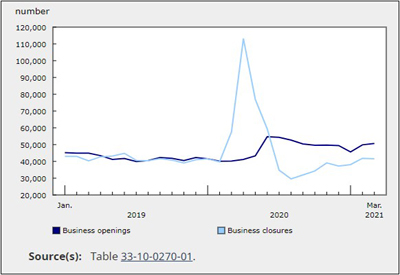The New Face of Competition for Wholesale Distributors

Nov 12, 2018
The competitive landscape of the wholesale distribution industry is fiercer than ever before. With brand-new, internet-based distributors of all sizes seemingly popping up as quickly as mergers and acquisitions are building new distribution powerhouses, the competition just keeps getting more intense. Adding to the mix are an increasing number of manufacturing companies that are selling direct to retailers and offering online shopping options for consumers, bypassing distribution companies entirely. And let’s not forget the impact big box stores and e-tailers can have on the distribution channel as they leverage their purchasing power, large retail networks, and extensive B2C experience.
Of course, no discussion about distribution competition is complete without addressing the elephant in the room, Amazon Business. With the ability to sell millions of SKUs with flexible shipping options at low price points, Amazon is setting a high bar for customer expectations. Amazon is very good at responding to how buyers buy today by offering a powerful customer experience that uses modern technologies, such as artificial intelligence (A.I.) and data science.
Attempting to face this level of competition might be enough to make some distributors call it quits. But for those distributors who are willing to fight for a piece of the middle of the supply chain, they might find that within the very challenges they are trying to overcome are the opportunities they need to survive and grow.
Omni-channel sales
Long gone are the days when distributors could rely on just phone orders, counter sales, and show room sales. On the other hand, selling exclusively online can limit reach as well—missing out on other channel opportunities. Even if a business is in a niche with little competition today, that doesn’t mean it will stay that way. Considering the number of industries Amazon Business has already expanded into, it’s likely just a matter of time before that niche is served by Amazon, and then quickly followed by copy-cats. Distributors need to embrace a true omni-channel sales approach, so they can support however customers want to do business with them — be it in-person, online, or via mobile devices. This is often easier said than done, when many distributors still operate disparate, siloed systems to support the different channels. This makes it difficult, if not impossible, for distributors to provide a consistent customer experience across all channels—which is what customers expect.
This is all part of the shifting buyer behavior distributors are seeing. Customers desire easy online ordering with flexible payment and shipping options. They want to be able to place orders anytime, prefer self-service capabilities, and desire real-time access to product and shipping information. Customers want a convenient, flexible, and personalized experience.
To meet these needs, distributors require business systems that can process transactions quickly and seamlessly, regardless of how and where sales are taking place. These systems also must be able to ensure that warehouses can fulfill these orders, regardless of what channels they come in from.
Distributors need complete visibility into their entire inventory, so that that can ensure that the right warehouse handles an order based on the fulfillment flow and that sold products are replenished in the right quantity at the right location. Having the means to support multiple channels is critical for continued survival in wholesale distribution. To support those channels, distributors must have business systems that have the agility and adaptability to meet this complexity and whatever may come next.
Margin control
Being able to meet the needs of every channel is only the beginning. Razor-thin margins that are being sliced even thinner mean that distributors need to find new ways to manage costs. Top-heavy competition is driving product prices down, while wages, healthcare costs, and transportation costs are rising. Like never before, distributors must look for ways to improve efficiency and automate business processes.
Inventory optimization can help. Carrying excess inventory increases overhead, while stock-outs result in lost revenue. Distributors need to have the right kinds and amounts of inventory in the right places at the right times. With tools such as advanced customer relationship management, multi-location demand planning, and multi-site inventory control, distributors can be ideally positioned to meet demand.
The next step is efficiently getting products off the shelves and quickly into the hands of customers. An integrated warehouse management system (WMS) can help distributors streamline logistics operations with advanced capabilities for managing inbound and outbound deliveries, putaway, and picking, as well as optimizing labor. Transportation management tools can help complete the order fulfillment cycle by improving transportation sourcing, shipment planning, electronic contracts, rate and freight management, and carrier selection.
Distributors have already been maintaining margins for years via rebates and special pricing agreements (SPAs). The trouble is, rebates are ridiculously difficult for distributors to track and manage because they can be so complex with multi-layered variables, such as incentive-based rebates like volume and growth rebates, and channel-management rebates like ship-and-debit, indirect customer, and price-masking rebates. Tracking rebates in Excel spreadsheets is inefficient, time-consuming, and error-prone.
A rebate management system that encompasses the entire rebate claim process, however, allows distributors to integrate rebates into their regular processing and automate rebate tracking and recovery via specialized tools. Most importantly, it allows distributors to quickly recover the rebates they are entitled to and achieve the best possible product margins. Another way distributors can improve margins is by applying pricing science tools that methodically evaluate historical behavior and conduct scientific analysis of customer behavior to provide optimized pricing recommendations. Pricing science tools allow distributors to generate data-driven prices that increase overall margins, while ensuring customer satisfaction.
Value-add services
In an age where price is no longer a competitive advantage, distributors need to find innovative ways to differentiate themselves from the competition. This starts with distributors finding new ways to help solve their customers’ problems through value-add services. Depending on which industries a distributor serves, these service opportunities are going to differ, but they all have one thing in common—they go beyond typical, everyday customer service (such as offering expedited shipping or handling returns and replacements). Distributors can extend the distributor-customer relationship by offering traditional value-adds, such as kitting, labelling, and assembly, or more complex value-adds, such as customer-based milling and advanced manufacturing. Some distributors can manage their customers’ indirect material and machine supplies by monitoring the warehouse space they have set up for toolcribs, industrial vending machines, maintenance repairs, and operations inventory. Distributors who serve construction and related industries could offer project management and rental services. And to help differentiate not just themselves, but also the products they sell, some distributors can offer custom stamping services or even configure-to-order (CTO) products.
The more value a distributor can offer to customers, the more value those customers will see in the distributor. To reliably execute these services, however, a distributor’s business systems must support them and be able to integrate them into the overall business processes and workflows. Through the use of technology, distributors can implement and automate new business processes that are required for these services.
It’s then that a distributor has the means and the tools to deliver value-add services to customers that go beyond what the competition can deliver.
Workforce optimization
Regardless of the services a distributor supplies—whether it’s selling products, warehouse picking, or doing custom fabrication — distributors need skilled employees to provide those services. And distributors need to recognize that in order for their workers to provide the highest service levels to customers, employees must have the tools they need to do their jobs.
That’s not as easy as it sounds. Today’s wholesale distribution workforce is very dynamic. Baby boomers, with their years of accumulated knowledge, are retiring. Distributors are finding it difficult to interest new talent. Many of the industries that distributors serve have seasonal fluctuations, which means that workforce size and the number of temporary employees can vary significantly throughout the year. With all of these variables, it can be difficult to create a work environment that maximizes worker productivity while still meeting the expectations of the modern employee and keeping them engaged.
Today’s workers want user-friendly solutions, embedded analytics, mobile access, and A.I. that can enable them to work in the ways they want to work and help them be more effective at their jobs. Not only do these types of tools help distributors maximize human potential, they also have the additional benefit of improving recruitment and retention to help sidestep the distribution skills gap. With a shrinking talent pool, distributors need to focus more skill development and career planning.
By ensuring that employees have access to the right tools they need to do their job, distributors are also ensuring that their employees are in the best position to provide the best service to their customers.
Digital transformation
Many distributors simply don’t have the business systems, automations, workflows, and processes in place to support these new ways of doing business. Business systems that were implemented years (and often decades) ago can no longer support today’s complex demands. Whether its expanding omni-channel sales, increasing margins, differentiating through value-add services, or optimizing the workforce, these demands all rely on utilizing modern technology. It’s this digital transformation of the way the wholesale distribution industry operates that can help promote increased efficiency and effectiveness of existing processes. It opens the door to differentiation — allowing distributors to rethink approaches and create new data-driven ways to deliver and elevate services and the customer experience. It also helps creates new opportunities and helps lay the foundation for future growth.
This article was first published online by Infor, which develops business cloud software for enterprise and SMB companies globally. Infor has 17,000 employees and over 68,000 customers in more than 170 countries.
Find out more: www.infor.com
Photo by Aaron Mello on Unsplash.











